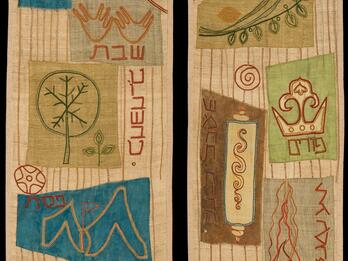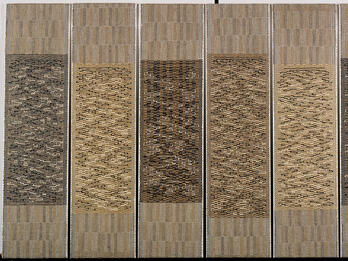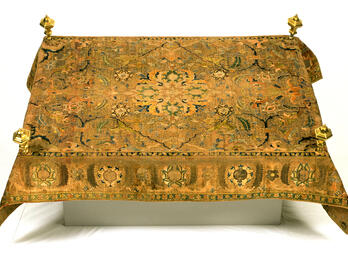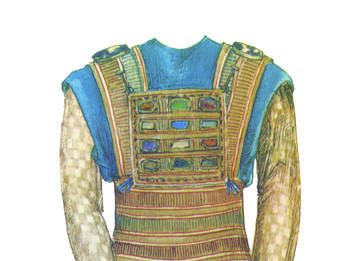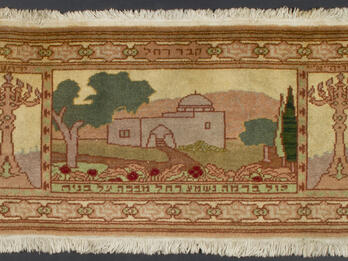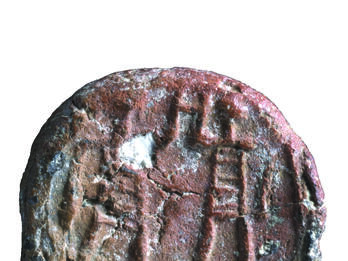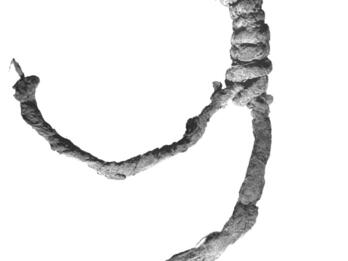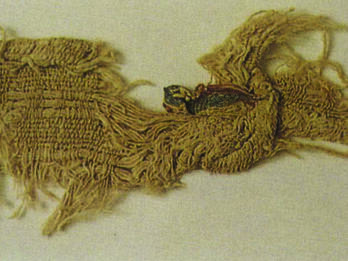Showing Results 1 - 10 of 12
Restricted
Image
Each of the four-sided shapes on Siona Shimshi’s Torah ark curtain represents a Jewish holiday, except for the one at left (second from top) with an image of hands arranged for a priestly blessing…
Contributor:
Siona Shimshi
Places:
Date:
1955–1965
Subjects:
Categories:
Restricted
Image
The idea for a multicolored prayer shawl (tallit) came to Zalman Schachter-Shalomi when he was meditating on a midrash about God creating the world while wrapped in a robe of light. Schachter-Shalomi…
Contributor:
Zalman Schachter-Shalomi
Places:
New York, United States of America
Date:
1956–1966
Subjects:
Categories:
Restricted
Image
Six Prayers was commissioned by the Jewish Museum in New York as a memorial to the victims of the Holocaust. The six tapestries evoke Torah scrolls or prayer shawls. The shapes in the central part of…
Contributor:
Annelise Albers
Places:
Date:
1965–1966
Subjects:
Categories:
Public Access
Image
This Persian carpet, manufactured between 1600 and 1630, was later used for a reader’s desk and desk cover in the Portuguese Synagogue in The Hague, Netherlands.
Contributor:
Artist Unknown
Places:
The Hague, Dutch Republic (The Hague, Netherlands)
Date:
1600–1726
Categories:
Public Access
Image
A detailed description of the priests’ sacral vestments in Exodus 28 provides written evidence of sacred dress and adornment, although neither archaeological evidence nor pictorial representations for…
Places:
Land of Israel (Israel)
Date:
Biblical Period
Subjects:
Categories:
Public Access
Image
This carpet was one of the many decorative objects with biblical themes produced at the Bezalel School of Arts and Crafts. This design features the legendary burial site of the biblical matriarch…
Contributor:
Bezalel School of Arts and Crafts
Places:
Jerusalem, Mandate Palestine (Palestine, Palestine)
Date:
1920–1929
Categories:
Restricted
Image
This bulla, found near the Western Wall in Jerusalem in the remains of a seventh–sixth-century BCE building, depicts two men facing each other, each raising one hand toward the other with the other…
Places:
Jerusalem, Land of Israel (Jerusalem, Israel)
Date:
Iron Age IIC, 7th–6th Century BCE
Subjects:
Categories:
Restricted
Image
This fringe from Kuntillet Ajrud, knotted from undyed linen threads, could be the fringe (tzitzit) that Israelites are commanded to wear on the corners of their garments, as indicated in Numbers 15:37…
Places:
Kuntillet Ajrud, Land of Israel (Kuntillat Jurayyah, Egypt)
Date:
Iron Age II, Late 9th–Early 8th Centuries BCE
Subjects:
Categories:
Restricted
Image
Fragment of beige linen material with blue linear embellishment and added red wool, from Kuntillet Ajrud. The dyes are from vegetal sources, the blue from indigo and the red from alizarin. Textiles…
Places:
Kuntillet Ajrud, Land of Israel (Kuntillat Jurayyah, Egypt)
Date:
Iron Age II, Late 9th–Early 8th Centuries BCE
Subjects:
Categories:
Public Access
Image
This wall hanging by Saul Borisov depicts Adam and Eve, naked but for fig leaves, not separate beings but still attached to one another, possibly hiding from God after eating the fruit from the…
Contributor:
Saul Borisov
Places:
Mexico City, Mexico
Date:
1960–1969


